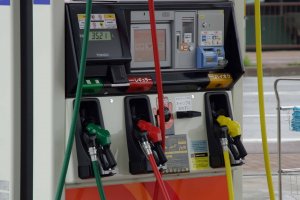If you decide to use a vehicle for your journeys throughout Japan, there are several things to consider—one of those being the essential task of how to fill your gas, or petrol, tank. Whether driving constitutes part or all of your transportation during your travels, keeping your vehicle fueled up is something that may seem daunting to those who are unfamiliar with the language or the procedure here. Never fear—here is a guide on what to expect from Japan’s gas / petrol stations to ensure you’re fueled up and ready to go.
Types of Gas Stations
Self Service vs. Full Service Gas Stations
Japan’s gas stations include both self-service facilities (pump your own) and full service options where an attendant will fill your tank for you. You can identify which gas stations offer self-service or full service with the signage out front.
Know what the Japanese signs look like in advance if you’d prefer one option over the other:
- フルサービス – Full Service
- セルフ – Self Service
Extras at full service gas stations
It’s common practice at full-service gas stations to get some next-level customer care—taking Japanese hospitality ('omotenashi') to the next level.
Though your mileage may vary between locations, you can expect the attendant to:
- Hand you a cloth to wipe down the dashboard and car interior
- Wipe down your windows and mirrors
- Offer to dispose of any trash or rubbish ("gomi") you have
- Check your tires
- Wave you into traffic (bowing as you depart)
How to fill up
Where to park
Filling up at a self-service gas station is usually a matter of following the prompts on a touch screen panel at the pump.
Fuel pumps are color-coded, so look out for the following:
-
Regular / レギュラー designated by a red pump and label
-
High Octane / ハイオク designated by a yellow pump and label
-
Diesel / 軽油 designated by a green pump and label

From the menu options on the touch screen, select the fuel type you require. A prompt will usually come up on the screen asking you to select either a specified yen value or liter amount to fill up with.
Most self-service gas stations allow you to pay with cash or major credit cards at the pump, but occasionally you will find older ones that only accept cash, especially in rural areas. Keep some yen on you to avoid being caught short.
If you visit a full-service gas station, the attendant will come to the driver’s side window. This is when you indicate your desired type of gas, amount, and method of payment. For that, you will need some basic terms and phrases to get your car filled.
When you need a full tank
Mantan (満タン) this phrase is particularly useful if you’re using a rental vehicle and need to fill the tank before returning it, which helps you avoid a surcharge.
When you’re just topping up
If you’d prefer to get a set value for your fuel, just give an indication in by value (yen) or quantity (liter or “rittoru”).
Whether you’re filling up or topping up, the attendant will usually ask whether you’re paying with cash or card. The word for cash is genkin (“gen-keen”), and credit card is kurejittokādo, or just say “kah-do”.
So, for example, if you want to fill up your tank with regular gas and pay with cash, you would say, “Regular. Man-tan. Genkin.”

Which gas stations are common?
There are various gas station chains you’ll find across Japan. Some common names include:
Cosmo | |
Eneos | |
Shell | |
Idemitsu | |
JASS |
Where to find gas stations on the road
Expressways
If you’re driving along highways and expressways, you'll typically find gas stations both near the entrances to them, as well as at rest areas along their routes too—look for the ubiquitous gas pump icon.
Most highway rest areas will be marked with either a PA (Parking Area) or SA (Service Area).
Note that Parking Areas are usually just that—a place to stop, use the restroom, or grab a drink from a vending machine. Service Areas have a wider range of facilities, including restaurants and gas stations.
Main Roads
You'll find plenty of gas stations along main roads in both central, suburban, and rural areas. You should be able to find them via the in-car navigation system or using an app like Google Maps (note: you must be parked to legally use a phone as the driver of a vehicle).
A word of warning: not all gas stations you’ll encounter are open 24 hours, especially outside major metropolitan areas. Bear this in mind, and ensure you fill up regularly.
























